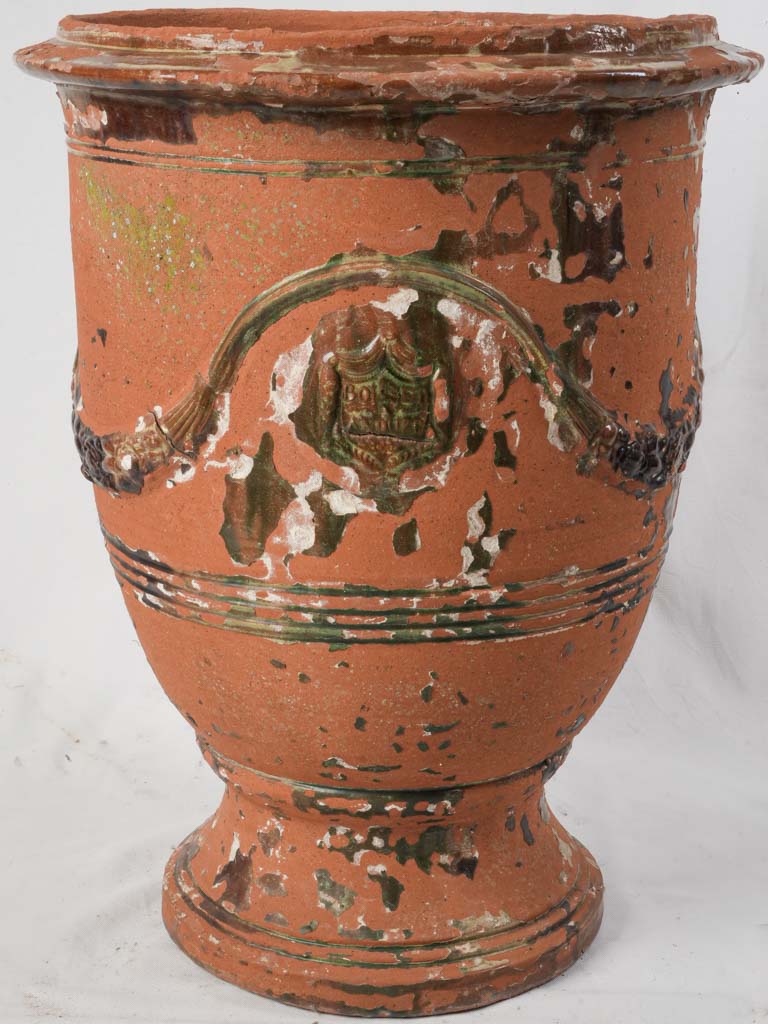
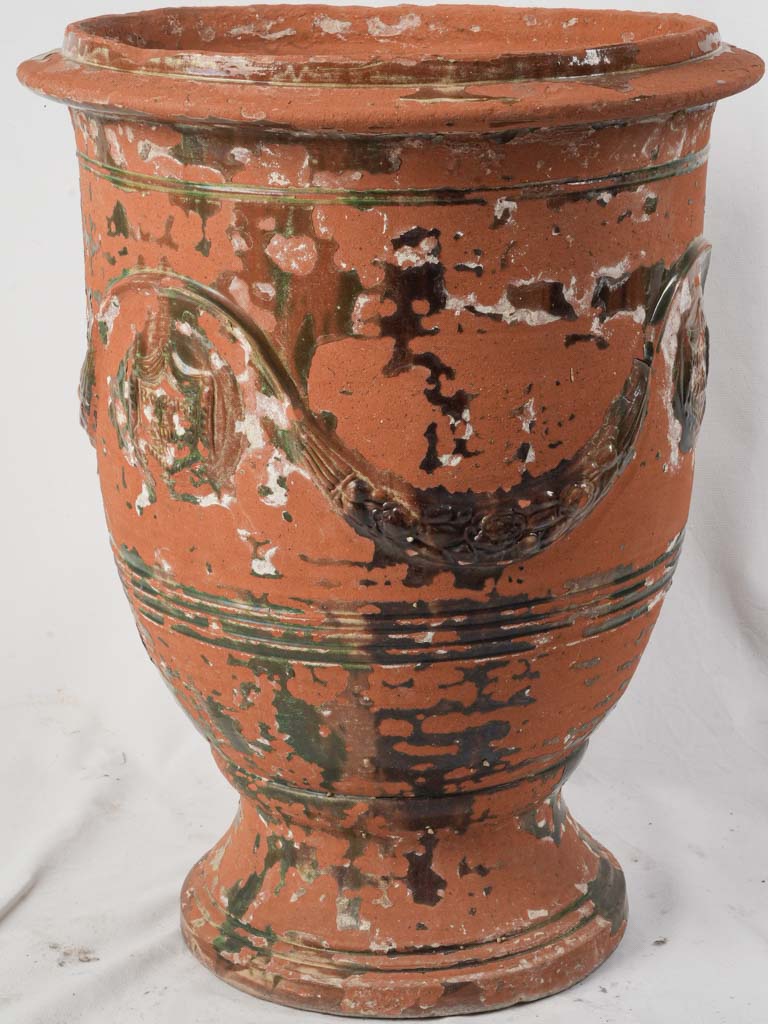
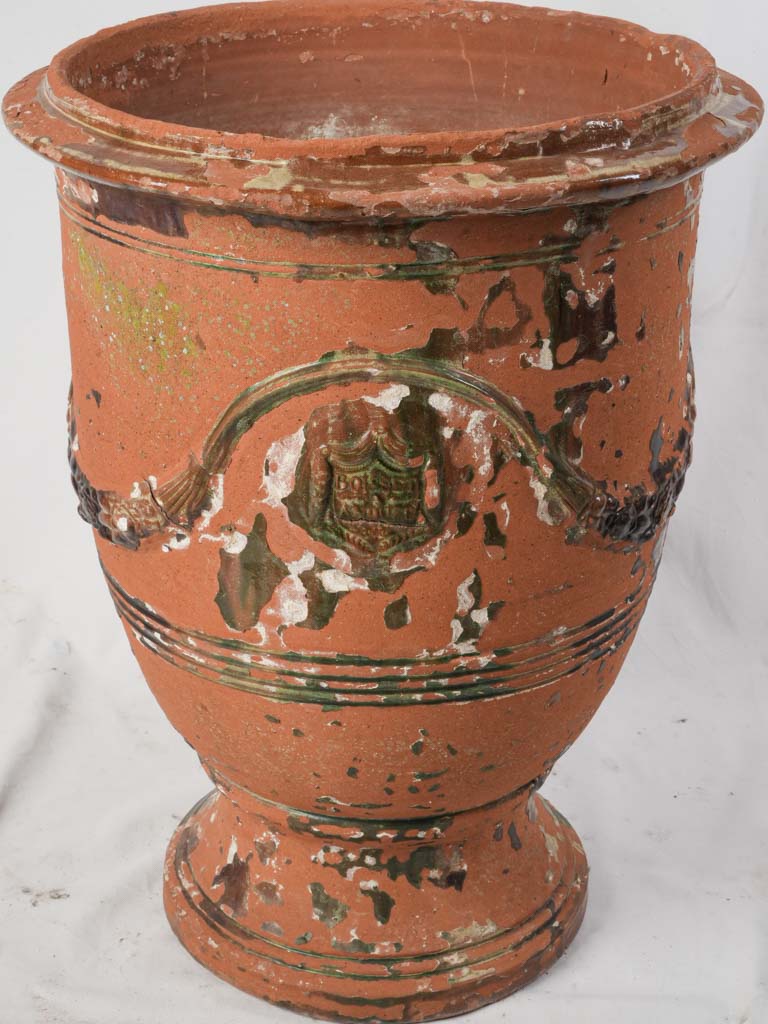
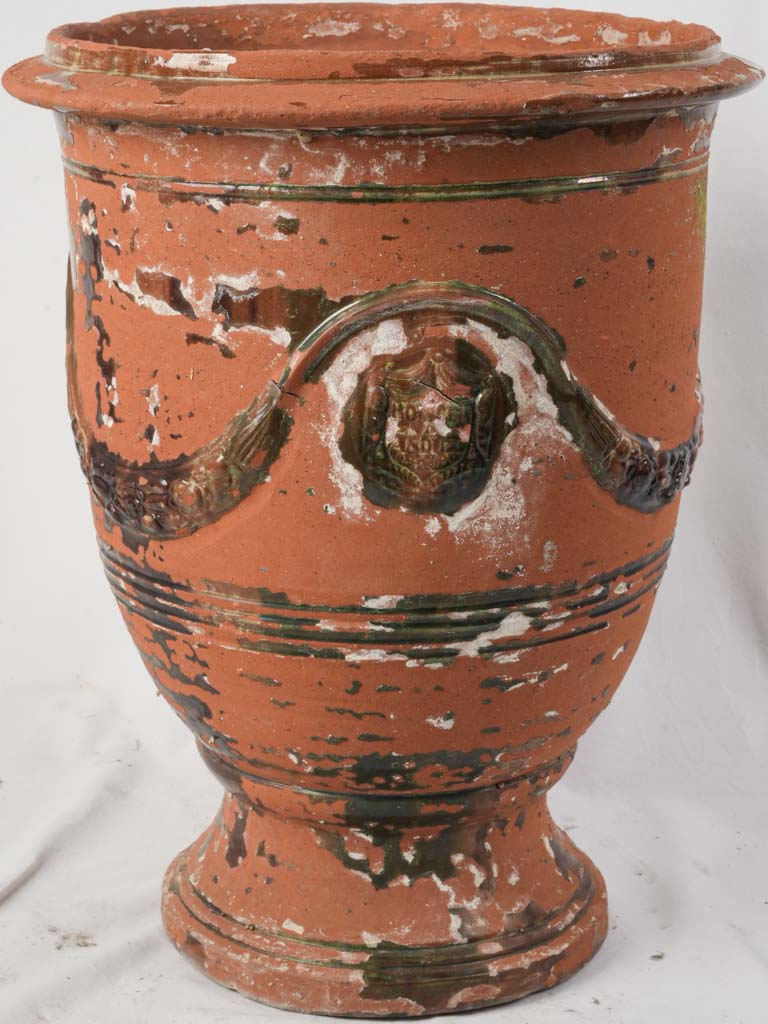
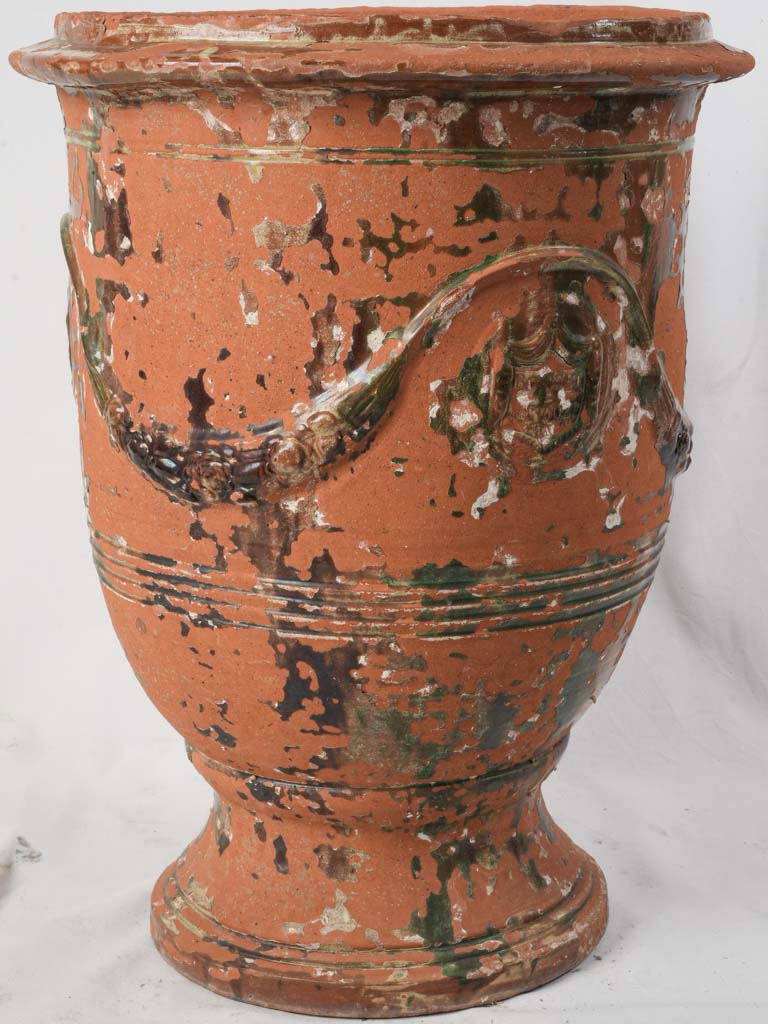
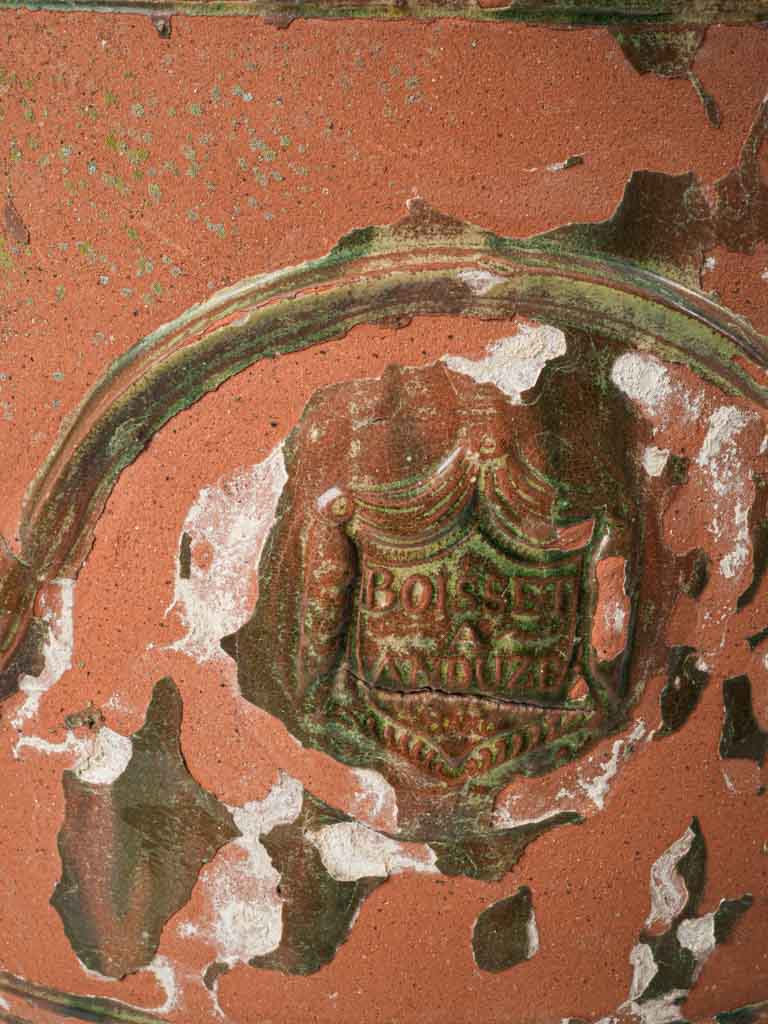


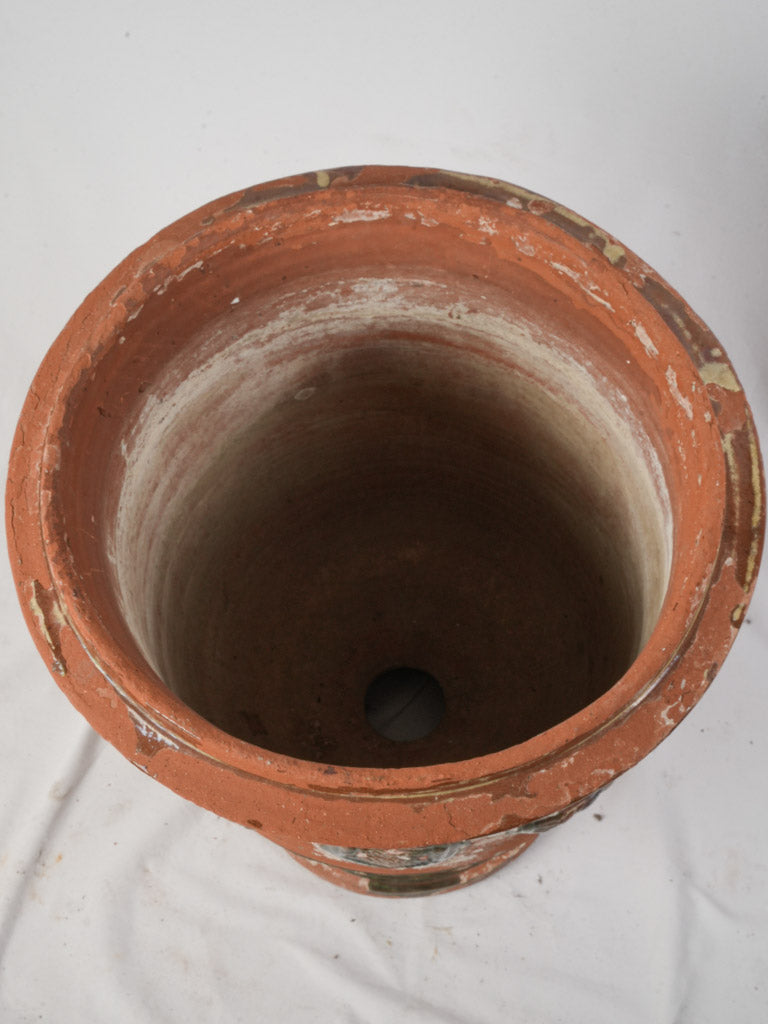

Late 19th–Early 20th Century Terracotta Planter - 28"
All inclusive pricing to USA
The price includes duties, taxes, tariffs and shipping. No more to pay for destinations within the US.
This terracotta Anduze planter by Boisset dates to the late 19th to early 20th century. The classic baluster body rests on a waisted socle and molded foot, rising to an everted rim with a rounded lip. Applied garlands with rosette terminals frame a central shield cartouche bearing the Boisset name, while triple circumferential fillets articulate the lower belly. The clay shows a warm _terre cuite_ orange, with remnants of green and dark glaze now beautifully abraded, testifying to decades of outdoor use.
The Anduze form emerged in the 17th century in the pottery town of Anduze, in the Gard, inspired by Italian Medici urns and adapted to local faïence and terracotta traditions. Intended for citrus and myrtle in orangeries and formal parterres, these pots are easily recognized by their swelling profiles, festooned swags, and a potter’s medallion. The Boisset ateliers were among the most prominent of the 19th century, celebrated for their durable red clay bodies and green lead glazes that weather gracefully in the elements, producing the mottled patina so prized by gardeners and collectors today.
This planter brings sculptural gravitas to a terrace, loggia, or conservatory, ideal for a clipped boxwood, lemon tree, or olive standard. Indoors, it anchors an entry or garden room as a stand-alone accent, its rustic surface harmonizing with limestone, patinated metals, and Provençal textiles. Used to flank French doors or a fireplace, it introduces historic character and an unmistakable sense of the South of France.
Condition and patina consistent with age.
Approx. overall 28" high x 21¾" diameter externally at widest
Approx. overall 71cm high x 55cm diameter externally at widest
Choose options










Late 19th–Early 20th Century Terracotta Planter - 28"
Sale priceUS$3,894

